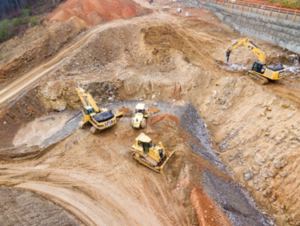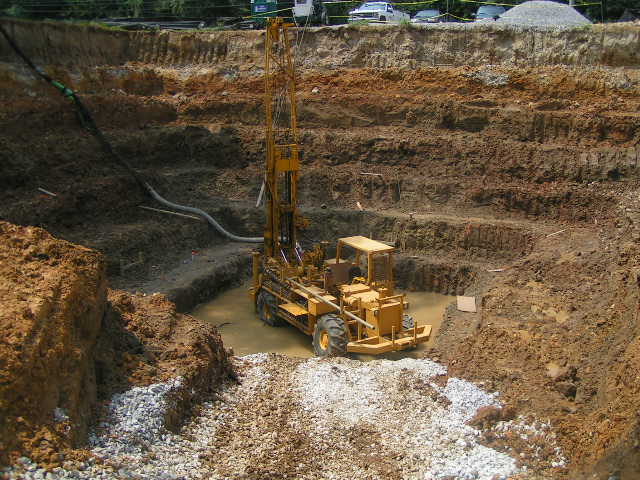Geotechnical Engineer Description: What to Expect from These Experts
Geotechnical Engineer Description: What to Expect from These Experts
Blog Article
Investigating the Interdisciplinary Nature of Geotechnical Engineering and Its Impact on Ground Improvement and Foundation Design
By integrating insights from structural, environmental, and geological self-controls, geotechnical engineers are equipped to attend to complicated dirt behaviors and site-specific difficulties. This joint strategy not only enhances the efficacy of strategies such as soil stabilization and dynamic compaction but also guarantees that projects adhere to sustainability principles.
Introduction of Geotechnical Design
Geotechnical engineering is a crucial branch of civil design that focuses on the actions of planet products and their communication with structures. This technique incorporates the study of dirt, rock, and groundwater, intending to comprehend their residential properties and just how they affect the performance of civil design jobs. Geotechnical engineers evaluate the mechanical and hydraulic behavior of these materials to make sure the security and safety and security of structures such as structures, bridges, and preserving walls.
The scope of geotechnical engineering consists of site examinations, soil tasting, and screening, along with analysis of soil mechanics and rock mechanics. Designers use advanced techniques to review ground conditions, recognize prospective hazards, and style effective ground renovation options. This may involve techniques such as dirt stablizing, grouting, and the use of geosynthetics, which improve the strength and resilience of the ground.
In addition, geotechnical engineering plays an important function in foundation layout, identifying ideal foundation types based upon dirt characteristics and filling problems. By including strenuous testing and evaluation, geotechnical engineers contribute considerably to the sustainability and durability of facilities, guaranteeing that frameworks can stand up to operational and environmental tensions with time.
Secret Interdisciplinary Relationships

Furthermore, ecological engineering plays an essential role in evaluating the influence of geotechnical tasks on the bordering environment. This cooperation is important for establishing lasting methods that decrease environmental degradation during excavation or ground improvement procedures.
In addition, the integration of geotechnical engineering with geology improves the understanding of subsurface problems, helping with more accurate website characterizations (geotechnical engineer description). This connection aids in risk analysis, specifically in areas prone to landslides or seismic task, consequently educating risk reduction approaches
Last but not least, improvements in modern technology have actually brought about interdisciplinary collaboration with data scientific research and geoinformatics. These fields add to improved modeling and analysis methods, permitting much more exact forecasts of dirt behavior under various problems. Thus, the interconnectedness of these disciplines enhances geotechnical design, promoting innovation and efficiency in structure style and ground renovation.
Ground Renovation Strategies
Ground improvement methods are necessary approaches used to boost the design properties of dirt, thus boosting its load-bearing ability and stability. These strategies are specifically crucial in locations where all-natural dirt problems are inadequate for sustaining structural lots or where environmental elements might compromise dirt stability.
Usual ground improvement approaches consist of dirt compaction, which raises density and lowers void areas, and grouting, which involves injecting materials right into soil to load voids and bind particles with each other - geotechnical specialist. Other methods consist of the installment of soil nails and supports, which offer extra assistance, and using geosynthetics to strengthen dirt frameworks. Deep mixing techniques, such as soil-cement columns, can also considerably enhance the stamina and tightness of weak soils
In addition, vibrant compaction and vibro-replacement strategies are commonly employed to improve dirt residential properties sitting. These approaches can minimize concerns associated with settlement and liquefaction, especially in seismic areas. By employing a mix of these ingenious techniques, geotechnical designers can properly resolve site-specific challenges, making certain that the structure systems will carry out effectively under expected loading problems, thus adding to general task success.
Structure Style Factors To Consider
Effective structure layout factors to consider are essential for the durability and stability of structures. A properly designed structure has to properly sustain the tons of the building while suiting soil problems, ecological elements, and possible modifications in time. Secret variables include dirt bearing capability, settlement attributes, and groundwater problems.
Understanding the dirt profile through geotechnical examinations is important, as it notifies the option of foundation kind-- be it shallow, deep, or specialized techniques such as heap foundations or floor covering structures. The expected tons, including live, dead, this contact form and environmental tons, have to be precisely computed to ensure the structure can withstand prospective failure devices, such as gliding, reversing, or excessive negotiation.
In addition, considerations for frost deepness, seismic task, and potential dirt liquefaction in seismic zones are crucial. In addition, water drainage and dampness control need to be incorporated into the structure style to minimize concerns related to hydrostatic pressure and soil erosion.
Cooperation among architects, designers, and geotechnical experts is important to develop a thorough foundation layout that not just meets regulative demands but also ensures the long-term try this site efficiency and safety of the structure. Ultimately, extensive preparation and cutting-edge services are needed to attend to the intricacies integral in structure design.
Situation Researches and Finest Practices

One significant study includes making use of deep dirt mixing in a skyscraper task in a seismic zone. This strategy dramatically enhanced the soil's strength and stability, permitting a safer and more reliable foundation system (geotechnical engineer description). The project highlighted the importance of picking proper ground enhancement methods based on site-specific problems, consisting of soil kind and loading demands
Another instance is the application of dynamic compaction for enhancing the bearing ability of weak soils below a commercial facility. This technique efficiently lowered settlement issues and boosted total website performance, demonstrating the efficiency of incorporating traditional design experiment modern-day technology.
Best methods derived from these study highlight the need of comprehensive site investigations, collaboration among multidisciplinary groups, and the incorporation of advanced modeling tools. By adopting these lessons, geotechnical engineers can maximize structure layouts and ground renovation strategies, eventually leading to safer and much more lasting building results.
Final Thought
In conclusion, the interdisciplinary nature of geotechnical design significantly boosts ground improvement and structure style. By incorporating concepts from different design self-controls, tailored techniques are established to address certain difficulties related to dirt residential properties and right here environmental effects.
The extent of geotechnical engineering consists of website investigations, soil sampling, and testing, as well as evaluation of soil technicians and rock technicians. The connection between geotechnical engineering and architectural engineering is specifically important, as the performance of structures is greatly influenced by dirt actions and homes.Usual ground improvement approaches consist of soil compaction, which boosts thickness and minimizes void rooms, and grouting, which entails injecting materials right into dirt to load voids and bind particles with each other. Various other methods include the installation of soil nails and anchors, which give added support, and the use of geosynthetics to strengthen dirt structures. A well-designed structure has to adequately support the lots of the building while accommodating soil conditions, environmental elements, and prospective modifications over time.
Report this page